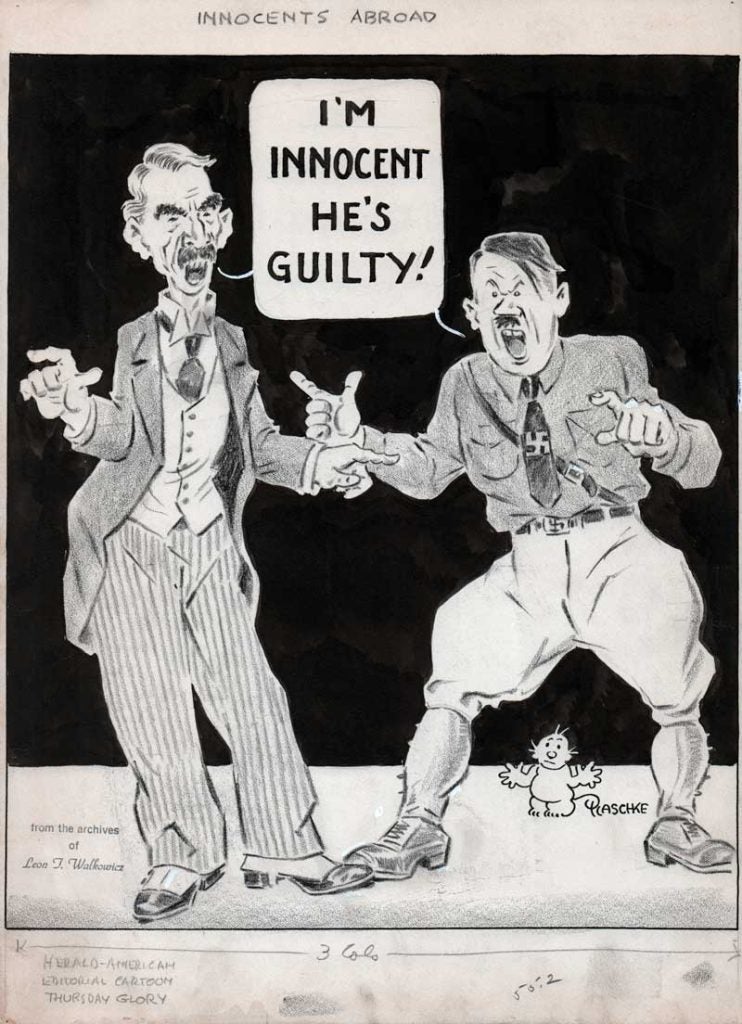
“Innocents Abroad” (September 28, 1939)
by Paul Albert Plaschke (1880 – 1954)
12 x 15 in., ink and charcoal on paper
Coppola Collection
Paul Plaschke was a cartoonist of German origin, known for his contributions to the Evening Post, Louisville Times and Courier-Journal newspapers through the 1920s and to the Herald Examiner and the Chicago Tribune in the 1930s.
Historians report that the Treaty of Versailles (1919), brokering the peace at the end of WWI, caused significant resentment in Germany, and that Hitler played off of this to achieve power. The British government believed that Hitler and Germany had some genuine grievances, but that if these could be met (‘appeased’) Hitler would be satisfied and become less demanding.
Becoming Chancellor in 1933, Hitler began to re-arm the country, breaking the Versailles restrictions. In March 1938, he annexed Austria. Czechoslovakia was next.
In September 1938, British PM Neville Chamberlain returned from Germany, having signed the Munich Agreement, and famously, publically, and ultimately ironically declared “My good friends, for the second time in our history, a British Prime Minister has returned from Germany bringing peace with honour. I believe it is peace for our time.”
German forces moved in and occupied a significant chunk of Czechoslovakia on October 1. Six months later, all of Czechoslovakia was taken over. Poland was next.
Chamberlain made an agreement with the Poles to defend them if Germany invaded. But Hitler did not think Britain would go to war over Poland, having failed to do so over Czechoslovakia.
Germany signed the Molotov–Ribbentrop Non-Aggression Pact with the USSR on August 23, 1939, which included a secret plan to divide Poland between them.
Hitler sent troops into Poland on September 1-3, 1939, claiming it was a defensive action. On August 31, Nazi troops wearing Polish uniforms staged a phony invasion of Germany, damaging several minor installations on the German side of the border. They also left behind a handful of dead concentration camp prisoners in Polish uniforms to serve as further evidence of the supposed Polish invasion, which Nazi propagandists publicized as an act of aggression.
On September 3, Britain, Australia, New Zealand, and France declared war on Germany, which is generally regardless as the start of WWII.
By September 28, 1939, the day this cartoon was published, Poland had fallen and Germany and the USSR concluded their agreement, outlining their zones of occupation.
Over two more years would pass before US isolationism would be broken by the December 7, 1941 attack on Pearl Harbor.

